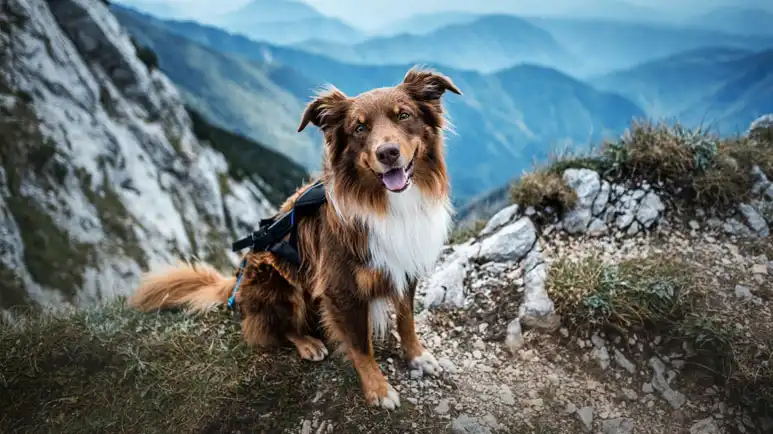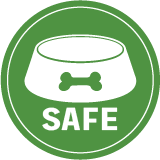This Outdoor Escape Is Tail-Wagging Good
Exploring the great outdoors with your canine companion is an unforgettable experience that strengthens your bond. Make your hiking trips safe and enjoyable with these tips.

STORY AT-A-GLANCE
- Hiking offers a fun, low-cost way to improve your dog's health, strengthen your bond, and give both of you a fresh mental boost
- Outdoor adventures help shy or anxious dogs come out of their shell by exploring new places, scents, and experiences that spark joy and confidence
- From harnesses and collapsible bowls to paw protection and doggy snacks, the right gear ensures your pup stays safe, hydrated, and happy on the trail
- Learn to recognize signs of overheating, keep your dog clear of wildlife, and check for ticks and burrs after each hike to keep adventures safe
- Keep dogs leashed, scoop waste, and practice polite trail manners to protect wildlife, other hikers, and ensure you're always welcome back with your four-legged friend
If you’ve ever watched your dog’s ears perk up at the jingle of a leash or seen their tail wag with excitement at the word "walk," then you already know this truth: Dogs are born adventurers. And what better way to fuel their curiosity and yours than hitting the trail together?
Hiking with your dog isn’t just about walking in the woods. It’s a journey of discovery, bonding, and building health for both of you. Let’s explore why this outdoor escape is one of the best gifts you can give your furry friend.
More Than Just a Walk in the Park
Hiking is good for the body, mind, and spirit, and that’s true for both humans and dogs. Trails offer more than fresh air and pretty views; they’re packed with mental stimulation, opportunities for training, and bonding moments that deepen your relationship. Here are the top benefits of hiking with your pet.1
- It gives you a physical and mental boost — Your dog was designed to move. Whether you have a high-energy breed like a Labrador or a curious mixed pup, the outdoors gives them space to stretch, sniff, and thrive. Hiking works their muscles and joints, improving strength and endurance. Plus, navigating natural terrain is like a mental challenge, keeping their minds sharp as they sniff new scents, hear unfamiliar sounds, and encounter exciting sights.
As for you, hiking is a fantastic way for you to stay fit while spending quality time with your best buddy. It beats going to the gym or using a treadmill any day. - A well-exercised dog is a calm and happy dog — Trails help release pent-up energy that might otherwise be spent chewing shoes or digging in the garden. After a hike, don’t be surprised if your dog crashes into a deep, satisfied sleep. That’s a sign of a fulfilled pet.
- It helps build confidence in shy dogs — The Humane Society website tells the story of Bazinga, a 3-year-old pit bull mix who was once timid and withdrawn. After being rescued, he was taken on hikes that helped him open up and embrace his true personality. The experience turned him into a confident explorer and paved the way for his adoption into a loving home.2
Planning Your Pup’s Perfect Hike
Not all trails are created equal, especially when it comes to dogs. Picking the right trail sets the tone for the entire experience, so if you are just starting on this hobby, follow these tips:3
- Find a dog-friendly trail — Start with trail-finding apps like AllTrails or TrailLink. These platforms let you filter by dog-friendly status, trail difficulty, and user reviews. Keep in mind seasonal issues, such as snow, mud, or extreme heat, and always check for trail closures and leash regulations before heading out.
- Consider trail difficulty — Begin with short, easy routes and gradually work your way up. Some trails might be too steep or rocky for small or older dogs. Others may lack shade or water, which can be challenging and exhausting during summer months.
- Know the rules — Every trail has its own guidelines. Some require leashes, others might ban dogs altogether. Following the rules ensures a better experience for everyone on the trail and keeps you from receiving unwanted fines — or worse, putting your dog in danger.
Packing the Essentials — What Your Dog Needs on the Trail
Once you’ve prepared your boots, backpack, water bottle, and other hiking essentials, you can now pack your canine hiking buddy’s equipment. Dogs need their own set of gear to stay safe and comfortable, such as:4,5
- Harness and leash — A snug, padded harness is recommended, especially on rugged, steep, or rocky terrain. It provides better control and reduces strain on your dog’s neck. Pair it with a strong, nonretractable leash for stability and safety.
Leashes with a bit of stretch are helpful — they absorb shock and give your dog room to move naturally without straying too far. However, never use retractable leashes on trails, as they can cause accidents or entangle your dog in tricky spots. - Protective booties — Hot pavement, sharp rocks, or icy paths can harm your dog’s paws, so providing booties will offer comfort and prevent injury. If your dog isn’t used to them, practice wearing booties at home before your hike.
- Water and snacks — Dogs overheat faster than humans. Always bring a collapsible water bowl and offer water frequently. For longer hikes, pack dog-friendly energy snacks, such as jerky or trail biscuits. These help maintain their stamina and prevent mid-hike crashes.
- First-aid kit — A pet-specific first aid kit is a smart addition to your backpack. Include items like antiseptic wipes, bandages, tweezers for removing burrs or ticks, and paw balm. You also need to know how to treat minor injuries, such as scrapes, burns, and cuts.
Safety First — What Every Pet Parent Should Know
Nature is unpredictable. While hiking brings joy, it also comes with risks. Knowing how to handle the unexpected can make all the difference.
- Watch out for signs of heatstroke — Dogs don’t sweat like humans; they pant to cool down. In hot weather, even a shaded trail can lead to overheating, so be aware of the signs such as rapid, heavy panting, vomiting, disorientation, bright red gums or tongue, and weakness.6
If your dog shows any of these symptoms, stop immediately. Move them to shade, pour cool water over their body, and seek veterinary help if needed. - Be careful not to mess with wildlife — Even if your dog is friendly, wild animals aren’t. Using a leash will keep your pet away from deer, coyotes, snakes, and even porcupines. It also protects delicate ecosystems.
Make sure to check your dog’s fur after every hike for ticks or burrs, and remove them before heading home. - Check the ground’s temperature — Touch it with your hand. If it’s too hot for you, it’s too hot for your dog’s paws. Stick to early mornings or shady trails during warmer months.
Share the Outdoors Responsibly by Practicing Proper Etiquette
Hiking trails are shared spaces, so practicing good trail etiquette will help keep the experience enjoyable for everyone, including dogs. Make sure to leash up and if your dog poops on the trail, scoop it up; however, do not leave it anywhere. Dispose of them properly, after you finish the hike. Leaving dog waste behind can harm local plants and pollute water sources.7
Be aware of other dogs — not all of them are happy to greet your pet. Keep your dog close when others pass. If your dog gets nervous or reactive, step aside and let others go by first.
It’s also helpful to train your dog to follow simple commands, such as "sit," "stay," "come," or "leave it."
Post-Hike Care
The hike doesn’t end when you get back to the car. Taking care of your dog afterward is just as important as planning before. As mentioned, always check your dog for ticks, burrs, stickers, and other minor injuries. Remove irritants by brushing out their coat and rinsing off dust or mud to keep their skin and fur healthy. Let them rehydrate, rest, and relax afterward.
Don’t forget to clean your dog’s gear, too. Proper cleaning ensures everything is ready for your next outing.
Every Step Is an Unforgettable Memory for Both of You
Hiking with your dog isn’t just an escape from daily life — it’s an invitation to connect with nature, your dog, and with yourself. So pack your bag, leash up, and set out on a trail you’ll both love.
Whether it’s your neighborhood nature path or a mountain trail a few hours away, the experience might leave a little mud on your shoes but forever pawprints on your heart. After all, nothing says joy like a tail wag on a trail!










